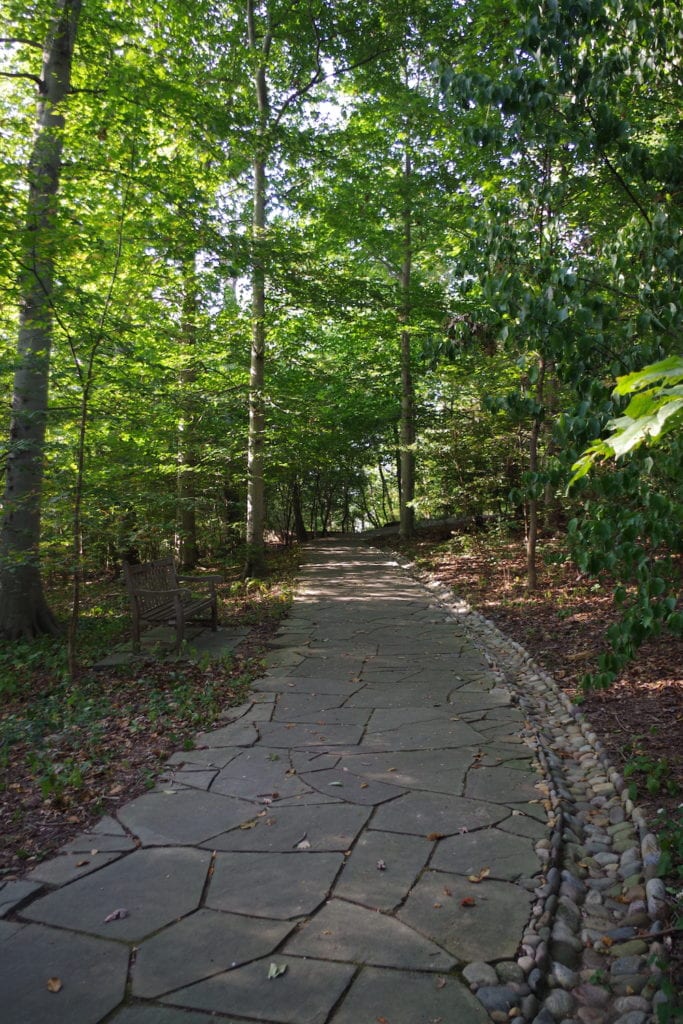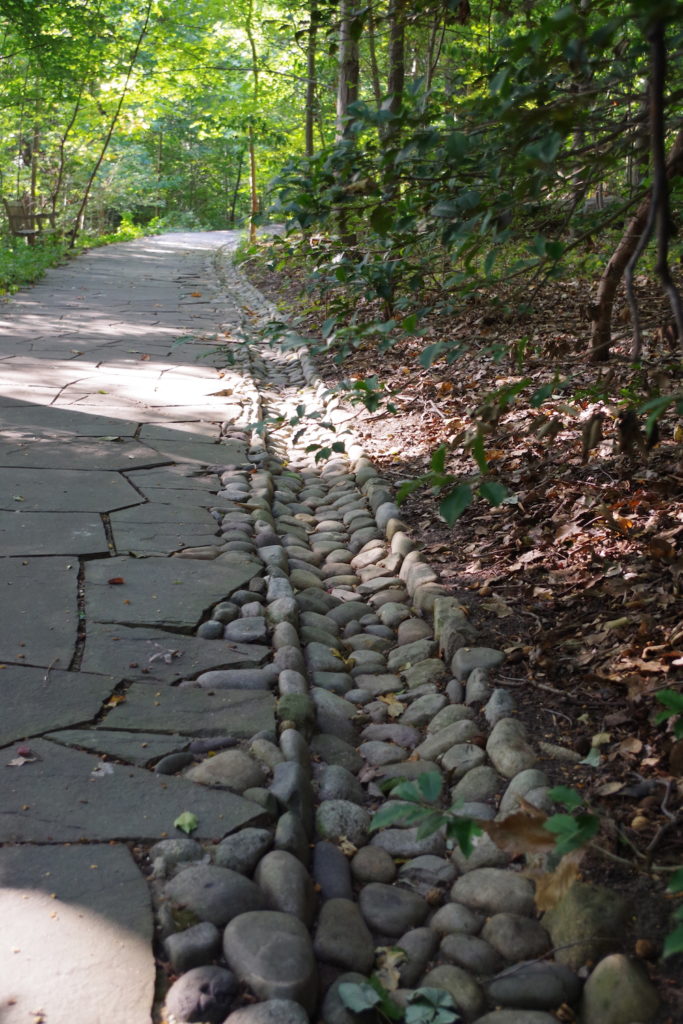September 12, 2019
Dedicated Olmsted Woods volunteer Virginia Egan is a part of our Olmsted Woods crew. This group of volunteers meets regularly on Wednesday mornings to maintain the five acre urban forest that exists within the Cathedral’s grounds. An enormous on-going project is the removal of invasive ivy in the Woods. Virginia typically sends a brief report of what the group accomplishes each week and notes the native plants (and wildlife) that they encounter. Below are some excerpts from her summer 2019 Woods Reports.

September 11, 2019
The Woods looked very hot and tired today. Virginia continued removing ivy, working up from the daffodil area toward the already cleared area below the Contemplative Circle. Fortunately, Dan had watered, so the soil was not as hard as it had been last week. Unfortunately, on that slope above the Pilgrim Walk, the ivy had dug straight into the bank and was tangled and difficult to remove. Still, by the end of the morning the two cleared areas were connected with a fresh, broad stretch of ivy-free slope. There seems to be a little rock wall in there; that should make next week’s weeding exciting! A murder of crows (American) cawed at one another in the distance, and a few warblers tittered in the trees above. Perhaps some migrating birds will turn up for the bird walk tomorrow.
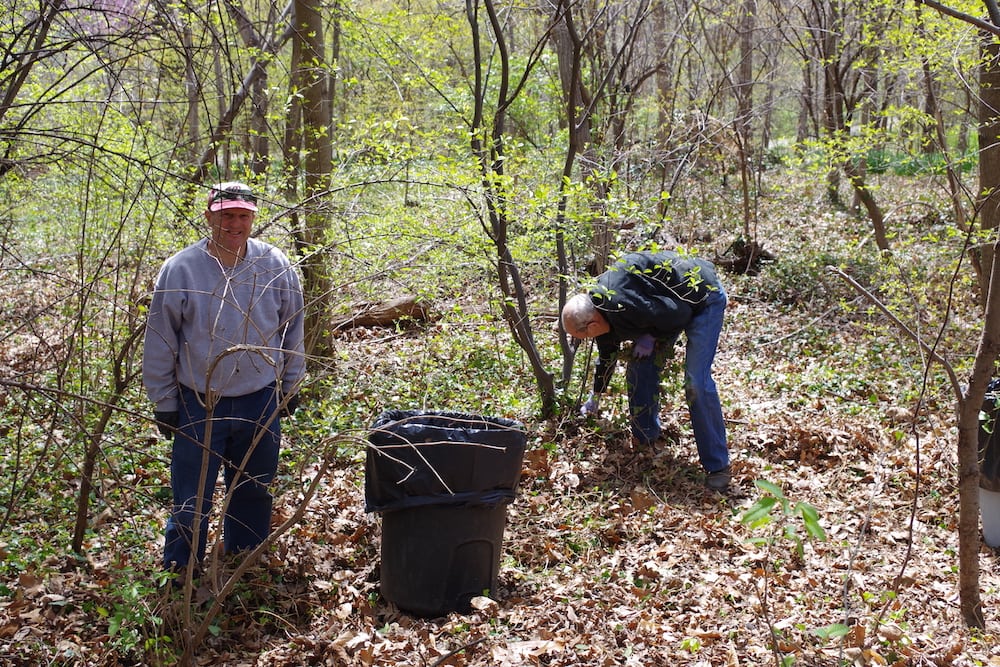
September 4, 2019
The morning began with some good news. Peter walked the area below the Contemplative Circle where we have been clearing ivy and calculated that we have cleared ivy from 15,000 square feet – this year only! Today we expanded that area but decided to begin a little further down the Pilgrim Walk (where we have a lot of daffodils in the spring) and work our way up. The goal will be to connect the two areas. Holly, Anne M., and Virginia worked hard, skirting a possible yellow jacket nest, and filled 3 large bags to overflowing. It was hot and the soil was very dry, but the work was satisfying, as it always is when you can actually see the progress made.
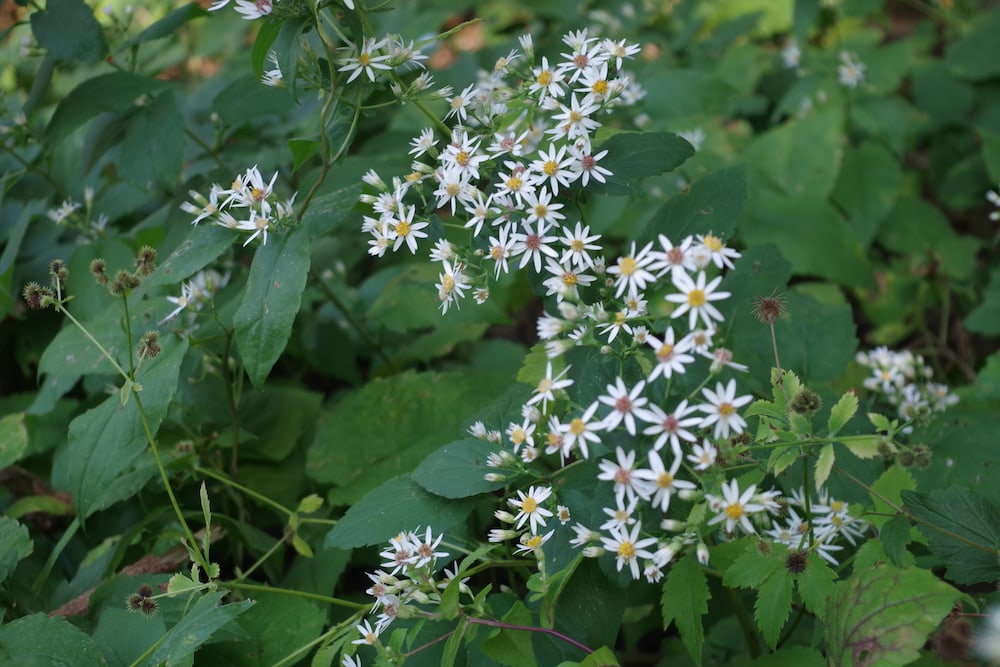
August 21, 2019
The St. Alban’s access garden was in desperate need of weeding, and Isabelle and Virginia were dismayed at the huge task ahead. But rain had finally fallen in the woods the evening before – 1.6 inches! – and the weeding was not too difficult. We learned to distinguish between the various sedges (Carex), some of which are native and some nonnative, especially the invasive nutsedge, which was well established. To our surprise, we had made good progress by the time Peter joined us, and by the end of the morning we had finished the job!
Anne E. walked through the woods and noted that we have only 1½ Elephantopus plants now (the one-half plant has only one leaf). Neither looks as though it will flower. But the good news is that we have about five cardinal-flowers (Lobelia cardinalis) down in the ravine, whereas last year we didn’t see any. White snakeroot (Ageratina altissima) is beginning to bloom along the Pilgrim path, and the New York ironweed (Vernonia noveboracensis) is beautiful. We have an attractive native cultivar of New York ironweed blooming in the St. Alban’s access garden, and with the weeding finished, it can now be properly admired.

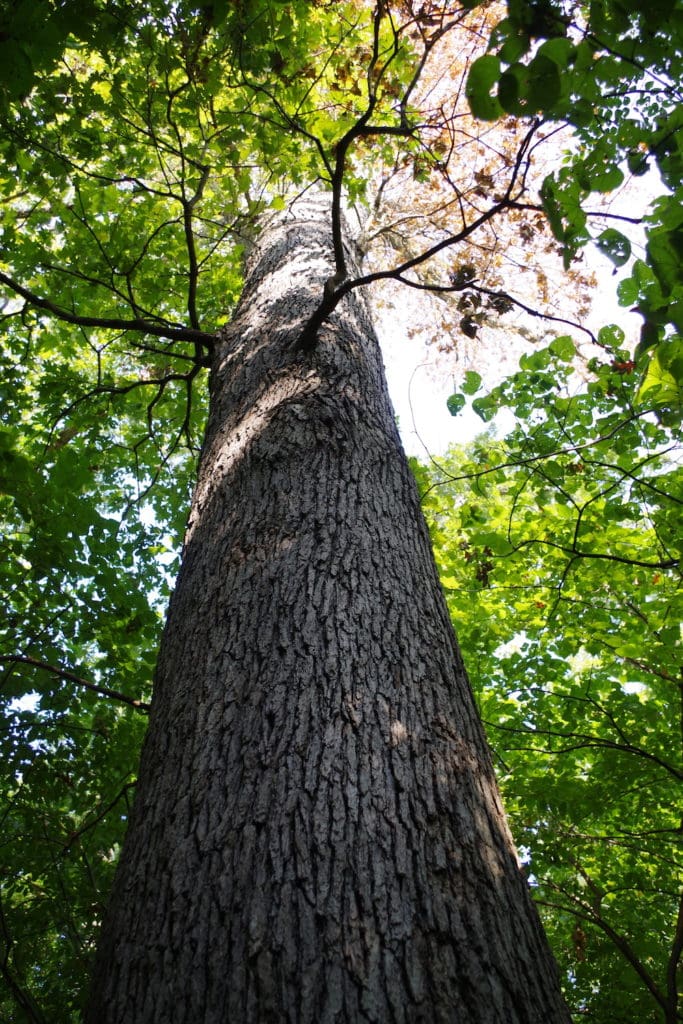
July 31, 2019
Peter was in Chicago at the Perennial Plants Symposium, so Sandy Flowers was our supervisor. Before we began work, Sandy took us to see 2 tall white oaks that are infested with an Asian variety of Ambrosia beetle and are dying rather quickly. The telltale sign of the infestation is sawdust at the base of the tree and die-back at the top. The beetles attack the tree within 3 feet of the ground, and you can see the thin wood plug called a frass that they expel as they bore into the wood. They carry in a fungus to feed their larvae when they hatch. The beetles don’t eat the tree, but the fungus blocks the tree’s xylem vessels, disrupting the circulation of water from the roots to the top of the tree and of sugar back down from the leaves. Once a tree is infested, arborists don’t know how to save it. Both of our dying trees are on the amphitheater side of the Pilgrim Walk. Apparently, last year was so wet that the oaks had too much water in their systems and became stressed. The stress made them emit ethanol, and the ethanol attracted the beetles to the trees. So interesting how these things work! Many thanks to Sandy for pointing this out and explaining what had happened. It’s sad that we will lose some of the tallest trees in the woods.

June 19, 2019
Virginia worked in the woods along with a team of mosquitos, who weren’t really much help. It was a humid morning and the woods were still dripping from last evening’s rain, but it was not too hot in the shade and the soil was moist, good for weeding. Since Sandy is leading tours for several groups from the American Public Gardens Association this week, the first order of business was to weed in front of each bench along the Pilgrim Path to make the seating look more inviting. Easy job, maybe half a morning’s work. But of course, the job took the entire 2-1/2 hours. There was a red-bellied woodpecker for company and the satisfaction of completing a job that visitors could actually notice!
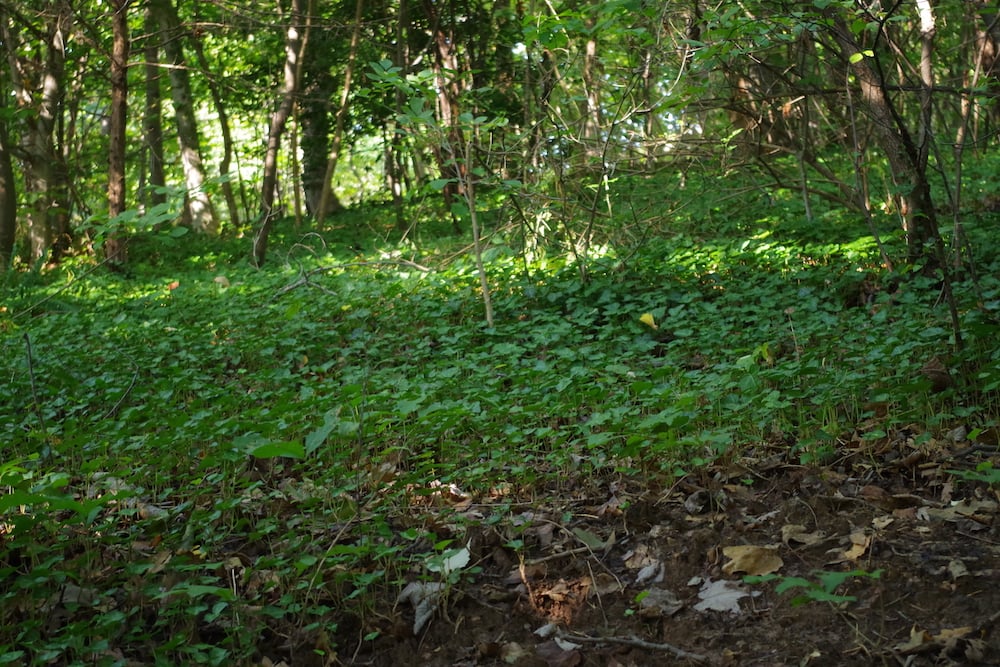

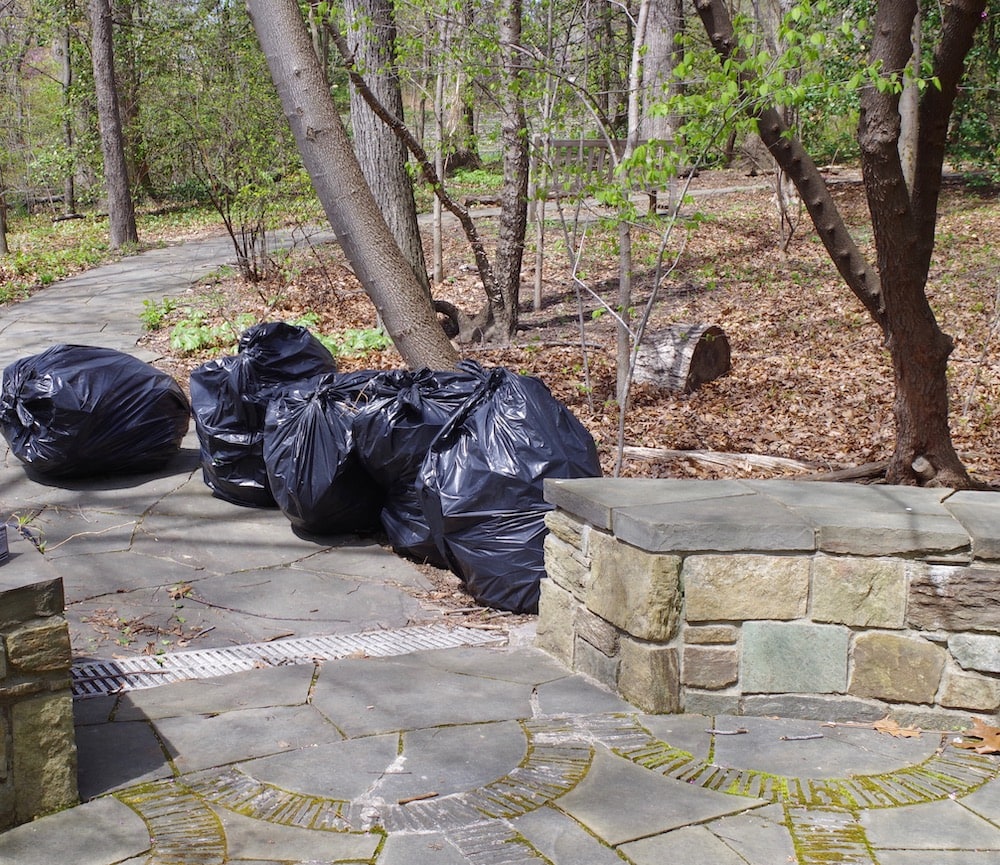

The Woods Crew will continue their work through November 20, and then resume in the spring. We welcome you to drop by and join the crew any Wednesday morning at 9:00 am. Contact Peter Spaulding at: pspaulding@cathedral.org for more information or fill out our Volunteer Form.
